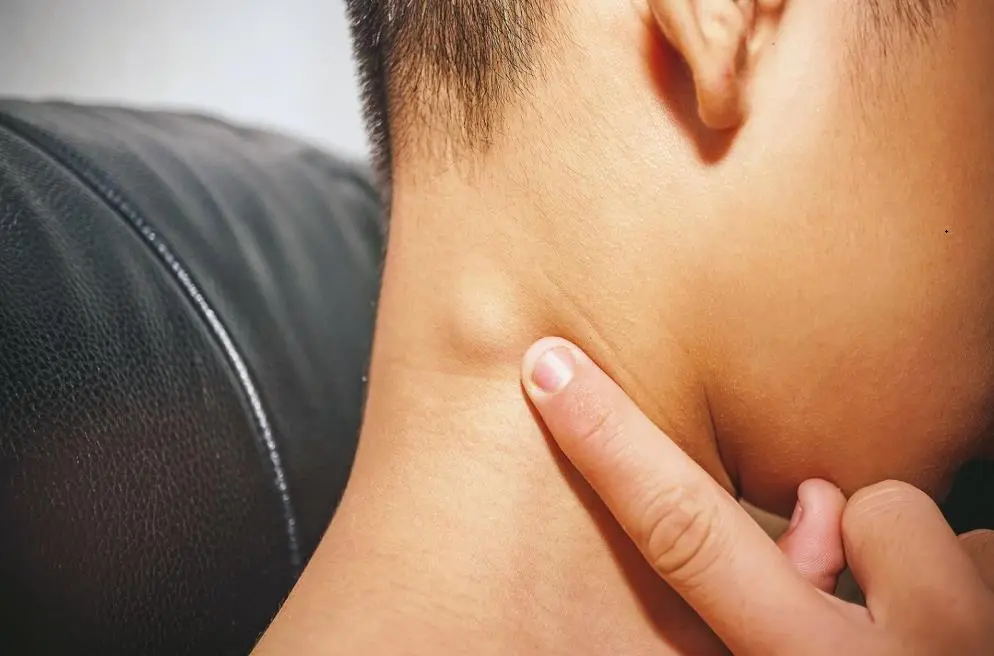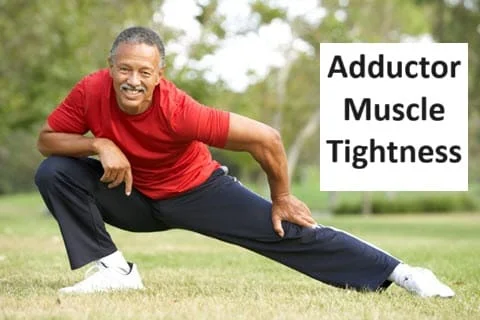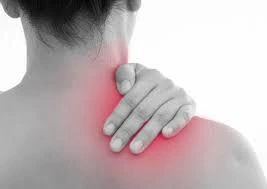Swollen Lymph Nodes
Introduction
Usually, viral or bacterial infections result in swollen lymph nodes. Cancer is not always the cause of enlarged lymph nodes.
Your body’s defense against infections is greatly aided by the lymph nodes, also known as lymph glands. Acting as filters, they stop the spread of bacteria, viruses, and other diseases to other regions of the body. Your neck region, beneath the chin, in your armpits, and your groin are common places to find swollen lymph nodes.
There are lymph nodes all over your body. Your body uses lymph nodes to identify and combat pathogens, transmission, and other foreign objects. They are essential to your immune system.
Your body uses lymph nodes to identify and combat pathogens, transmission, and other foreign objects.
One or more enlarged lymphatic nodes are referred to as “swollen glands”. Lymphadenopathy is the medical word for swollen lymph nodes.
If a child’s node is wider than one centimeter (0.4 inch), it is deemed enlarged.
Your body’s natural response to an illness or infection is swollen lymph nodes. These tiny lumps hurt a lot and are soft and sensitive. Although there are numerous reasons for swollen lymph nodes, upper respiratory infections are the most frequent culprit. See your physician to rule out anything more serious if they are enlarged and there is no apparent reason for them to be larger.
The transparent fluid that travels via the lymphatic system is filtered by tiny glands called lymph nodes. They may swell as a result of the accumulation of bacteria or sick or dead cells during an infection.
When someone has a sickness, they might observe enlarged lymph nodes in the neck, underarm, jaw, or groin areas of the body that are close to the infection site.
For example, a person suffering from COVID-19-related sore throat may also have lymph nodes that are enlarged in their neck. They might also be experiencing other infection-related symptoms like fever, exhaustion, and coughing.
Swelling may also occur from cancer that starts in or grows to the lymph nodes. In this instance, a tumor might be the cause of the swelling.
Lymph nodes: What are they?
Similar to blood vessels, the lymphatic system is made up of channels that are distributed throughout your body. The clear fluid that travels through the lymphatic circulatory system is filtered by tiny glands called lymph nodes.
White blood cells, those in charge of eliminating invasive organisms, are kept in lymph nodes.
They function as a checkpoint as well. The lymph nodes recognize and block the passage of bacteria, viruses, and aberrant or diseased cells through the lymph channels.
What are lymph nodes that swell?
You might notice a little swelling on both sides of the neck when you’re not feeling well, such as when you’re sick. To the touch, those lumps are most likely tender and soft, and they could cause discomfort a little. Your neck’s lumps are enlarged lymph nodes. Swollen lymphatic nodes are referred to as lymphadenopathy or adenopathy in medicine.
Indeed, lymphadenopathy is a common and beneficial condition. These peas- or bean-sized lymphatic nodes are swollen as a result of an infection or illness; this is a normal physiological response. Your body’s immune system is actively fighting infection and/or invasive viruses or bacteria when your lymph nodes are swollen.
Even though they are actually a component of the lymphatic system rather than glands, many people refer to them as swollen glands. It’s one of the less well-known bodily systems that regulate your fluid balance.
Your enlarged glands function as filters, assisting your body in eliminating bacteria, cells, and other foreign objects that enter your lymph fluid. Lymph fluid, consisting of proteins, lipids, and white blood cells, is a clear or somewhat yellowish fluid.
Swollen lymph nodes that are located on one or both surfaces of your neck may come to mind when you visualize swollen glands. However, you can also experience excruciatingly large lymph nodes under your arms. The medical terms “axillary adenopathy” or “axillary lymphadenopathy” refer to enlarged lymph nodes in the armpits.
Considerations
The following are typical locations where lymphatic nodes can be felt with the fingers:
- Groin
- Underarm
- Neck (a series of lymph nodes runs down both sides of the back of the neck, as well as on both sides of the front).
- Beneath the chin and jaw
- In the back of the ears
- Behind the head

How can you tell whether your lymph nodes are swollen?
Swelling of the lymph nodes is also known as lymphadenopathy.
For example, the following symptoms could be present in addition to lymph node swelling in the neck:
- Spitting
- Exhaustion
- Fever
- Chills
- Runny nose
- Perspiring
A pelvic infection may cause lymph nodes to swell in the groin. They may hurt when bending or walking.
What is the indication of an enlarged lymph node?
One indication that your body’s lymphatic system is functioning to purge infection and disease is swollen lymph nodes.
Infections
When an infection develops in the region where lymph nodes are found, the nodes enlarge. For instance, an infection of the upper respiratory tract, like the common cold, can cause the lymphatic system in the neck to swell.
Pain may occur from swollen lymph nodes brought on by an infection.
Head and neck lymph nodes that are swollen may be the result of infections like:
- Infection in the ears
- Sinus congestion
- The common cold
- strep throat
- The mononucleosis
- Tooth infection, such as a cavity in the teeth
- Infection of the skin
- HIV
- Sexually transmitted infections (STIs)
Additional potential reasons consist of:
- Fever from cat scratches
- Tonsillitis
- The toxoplasma infection
- Tuberculosis Disease
- Shingles
Not infectious
Serious illnesses like cancer or immune system problems can make lymph nodes all over the body swell.
Immune system conditions such as rheumatoid arthritis and lupus can lead to swelling of the lymph nodes.
Lymph nodes can enlarge as a result of any of the cancers that spread throughout the body. The survival rate drops when cancer grows to the lymph system from one location. The lymph nodes enlarge in conjunction with lymphoma, a cancer that damages the lymphatic system.
The following cancers can result in swollen lymph nodes:
- leukemia
- Hodgkin lymphoma
- lymphoma other than Hodgkin’s
- A rare form of lymphoma called Sézary syndrome
Other reasons why lymph nodes swell include, but are not restricted to:
- Certain drugs, like antimalarial and antiseizure medications
- Medication-related allergies
- Tension
- Gingivitis
- Oral sores
How are enlarged lymph nodes checked?
Lymph nodes that are enlarged can range in size from pea-sized to cherry-sized.
They may hurt when you touch them or when you move in specific ways.
When you turn your head in a certain direction or chew food, swollen lymph nodes that are located under your jaw or on either end of your neck may hurt. Often, you can feel them just by rubbing your hand over the area just below your jaw. They might also be sensitive.
Possible Causes
What are the most typical reasons that lymph nodes swell?
An infection of the upper respiratory tract is the most frequent cause of swelling lymph nodes in the neck. The full resolution of these infections may take ten to fourteen days. Once your condition improves, the swelling should also subside. However, it might take a few more weeks for it to fully disappear.
Your enlarged lymph nodes could also be caused by the following bacteria and viruses:
- Flu and cold.
- Infected sinus (sinusitis).
- Sore throat.
- Cuts on the skin.
- Mononucleosis.
When additional blood cells arrive to fend off an infection, your lymph nodes enlarge. They basically pile on top of each other, applying pressure and swelling.
The swollen lymph nodes are frequently located in close proximity to the infection site. This implies that you might get enlarged lymphatic nodes in the cervical region if you’re suffering from strep throat.
Small, spherical, or bean-shaped cell clusters are called lymph nodes. An assortment of distinct immune system cell types can be found inside lymph nodes. These specialized cells guard you by eliminating invaders and filtering lymphatic fluid as it passes through your body.
Your body’s lymph nodes are grouped together, and each of them drains a particular region. Certain areas, like the lymph nodes in the neck area, beneath your chin, in the area of your armpits, and in your groin, may be more prone to swelling. The location of the enlarged lymph nodes may provide information about the underlying cause.
The most frequent cause of enlarged lymph glands is an infection, especially one that is viral, like a cold.
Common infections
- Throat infection
- Medication
- Infections of the ears
- Tooth infection (abscess)
- The mononucleosis
- infections of the skin or wounds, like cellulitis
- The virus that causes AIDS is called the human immunodeficiency virus (HIV).
Uncommon infections
- Tuberculosis
- Some sexually transmitted diseases, like syphilis
- Toxoplasmosis: is a parasitic infection contracted by eating undercooked meat or coming into contact with the excrement of an infected cat.
- Infection with bacteria from a cat bite or scratch is known as “cat scratch fever.”
Immune system abnormalities - Lupus is a long-term inflammatory illness that affects the kidneys, blood cells, joints, skin, heart, and lungs.
- Rheumatoid arthritis, also called RA, is a persistent inflammatory illness that affects the synovium, the tissue lining your joints.
Malignancies
- Cancer that starts in the lymphatic system is called lymphoma.
- Cancer of the blood-forming tissues in your body, such as the lymphatic and bone marrow systems, is known as leukemia.
Signs and symptoms
Your body’s network of lymph nodes, vessels, and organs is known as the lymphatic system. There are numerous lymph nodes in the area of your head and neck. These are the same lymph nodes that swell frequently, along with the ones in the area of your armpits and groin.
- Expanded lymph nodes could be a sign of a health problem in your body. Upon initial swelling of your lymph nodes, you may observe:
- Pain and tenderness in the lymphatic system
- Swelling in the lymph nodes that can resemble a pea kidney bean or even larger
Other indications and symptoms you may experience, contingent on the reason for your enlarged lymph nodes, include:
- Fever, sore throat, runny nose, and other symptoms of upper respiratory infection
- Your body’s lymph nodes will swell generally. When this happens, it could be a sign of an immune system illness like lupus or rheumatoid arthritis, or an infection like the human immunodeficiency virus (HIV) or mononucleosis.
- Hard, fixed, quickly expanding nodes that could be lymphoma or cancer
- High temperature
- Sweats at night
How can enlarged lymph nodes be identified?
To further assess your lymph nodes or other parts of your body that might have contributed to the lymph node’s enlargement, the doctor might, if necessary, order an imaging test. Typical imaging procedures for lymph node examinations include:
- Radiography
- Ultrasonography
- CT scans
Your doctor might prescribe an MRI if the results of the tests above indicate that you need more assessment.
After the MRI, additional testing might be required in some circumstances. The physician might prescribe a biopsy of a lymph node in this situation. This test is minimally invasive and involves taking a sample of living cells from a lymphatic node using thin, needle-like instruments. After that, the cells are sent to a lab to be examined for serious illnesses like cancer.
Lymph nodes be identified?
Inform a doctor if you have recently fallen ill or experienced an injury. They will need this information to identify the source of your symptoms.
Your medical history will be another question the doctor will ask. Giving them a history of your medical conditions aids in the diagnosis process, as certain illnesses or drugs can cause enlarged lymph nodes.
Once you and the doctor have discussed the symptoms, the doctor will examine you physically.
This includes:
Examining your lymph nodes’ size, consistency, and movability to determine whether they are firm and hard or soft and flexible. Feeling them to determine whether they are tender
To further assess your lymph nodes or other parts of your body that might have contributed to the lymph node’s enlargement, the doctor might, if necessary, order an imaging test. Typical imaging procedures for lymph node examinations include:
- Radiography
- Ultrasonography
- CT scans
Your doctor might prescribe an MRI if the results of the tests above indicate that you need more assessment.
After the MRI, additional testing might be required in some circumstances. The physician might prescribe a biopsy of a lymph node in this situation. This test is minimally invasive and involves taking a sample of living cells from a lymphatic node using thin, needle-like instruments. After that, the cells are sent to a lab to be examined for serious illnesses like cancer.
How are enlarged lymph nodes treated?
Without any medical intervention, enlarged lymph nodes may naturally shrink. Sometimes the doctor may want to keep an eye on them without doing anything.
If you have an infection, you might be given antiviral or antibiotic drugs to treat the underlying cause of your enlarged lymph nodes. To help with pain relief and inflammation reduction, your doctor may also suggest drugs like ibuprofen (Advil, Motrin) and acetaminophen (Tylenol).
Cancer-related swollen lymph nodes might not return to normal size till the cancer gets better. Removal of the tumor and any impacted lymph nodes may be part of the cancer treatment. Another option for shrinking the tumor is chemotherapy.
Localized enlarged lymph nodes are those that are confined to a single area of your body. Furthermore, since you usually have a virus, there is usually no need for treatment; the illness will simply go away on its own. The nodes will eventually return to their typical size by shrinking.
Your healthcare provider may prescribe medication to treat certain infections.
If you have swollen lymph nodes in more than one area of your body, they are said to be generalized. This typically indicates a more severe systemic disease, which affects the entire body.
These are numerous and could consist of:
- Autoimmune diseases (like lupus or rheumatoid arthritis)
- The toxoplasma infection
- Infections contracted through intercourse (such as syphilis or HIV)
- Bacterial infections, such as typhoid fever or Lyme disease
- Viruses (such as Epstein-Barr or measles)
- Malignancies (such as leukemia or lymphoma)
Treatments for these conditions will need to be more intensive and prolonged. It’s possible that your enlarged lymph nodes won’t shrink back to normal size till after your treatment is over.
How can enlarged lymph nodes be avoided?
It would not be desirable to stop swollen lymph nodes. They indicate that your system is battling a disease or infection.
Your best option if you detest the discomfort associated with swollen lymph nodes is to take extra precautions to avoid contracting common viruses by doing the following:
- Maintaining good dental hygiene can help you maintain the health of your teeth and gums.
- Hand wash a lot.
- Obtain vaccinations against influenza, shingles, and tuberculosis.
- Refrain from sharing food, drinks, or private items like towels with everyone who is
- ill with a common cold or another communicable disease.
- When engaging in sexual activity, use barrier techniques such as condoms.
- If you’re experiencing an allergic or adverse reaction to your medication, talk to your doctor about changing them.
- Stay away from letting your indoor cats play outside with feral cats.
- Refrain from touching your nose and eyes.
- Avoiding contact with the sick.
- Clean the surfaces in your house or place of business.
- Getting enough rest, maintaining a healthy diet, and exercising
How can I manage swollen lymph nodes at home?
You can use natural remedies to manage lymph nodes that are swollen in the armpits and other trouble spots if they’re sore and tender.
Try applying a warm compress (such as a heating pad or rice sock that can be microwaved). Additionally helpful are over-the-counter pain relievers like acetaminophen and ibuprofen.
You won’t have lymph node shrinkage from these treatments. However, they will only temporarily lessen your discomfort while your body successfully strikes off an infection or sickness.
Generally speaking, tender lymph nodes indicate that the body is battling an infection. If no treatment is given, the discomfort typically goes out in a few days. It might take several weeks for the lymph node to shrink back to its original size.
When should my healthcare provider treat my swollen lymph nodes?
The majority of lymph node swellings are not dangerous and will disappear when your infection goes away.
Swollen lymph nodes are usually only a concern for medical professionals when they grow for no apparent cause.
See your doctor if you have a huge, swollen area but are not feeling sick or if you haven’t had the flu, cold, or other infection recently.
Additional testing, such as a biopsy, imaging scans, or blood work, will be required.
Rarely, enlarged lymph nodes may indicate lymphoma, a type of cancer of the lymphatic system.
Injuries, AIDS, and cancer that have moved via the lymph nodes into another area of the body are among the less frequent causes of enlarged lymph nodes.
Consult your physician if you experience any of the subsequent symptoms, as they could be signs of a more serious issue:
- lymph nodes with diameters greater than one centimeter.
- Nodes that hurt a lot, are hard, adhere to the skin, or grow quickly.
- Nodes that leak other materials or pus.
- symptoms such as fatigue, difficulty breathing, fever, night sweats, and weight loss.
- Swollen nodes near your collarbone, elbow, or lower neck (this frequently indicates cancer).
- Your enlarged lymph nodes are covered in red or irritated skin.
After a few weeks, the lymph nodes are not decreasing or do not stop growing.
- They are tender and red.
- They have a solid, erratic, or stationary feel.
- You experience night sweats, a fever, or inexplicable weight loss.
- In a child, every node has a diameter greater than 1 centimeter, or slightly less than half an inch.
In the event that breathing or swallowing becomes difficult, get medical attention right away.
What to Expect When You Visit The Presidency?
Along with a physical examination, your doctor will inquire about your symptoms and medical history. some related questions should be asked:
- When the edema started
- If the edema started suddenly
- Whether pressing any nodes causes pain
One could perform the subsequent tests:
- Blood tests, such as CBC with differential and tests for kidney and liver function
- Biopsy of lymph nodes
- X-ray of the chest
- Liver-spleen imaging
Treatment is based on what is causing the enlarged nodes.
Complication
If you don’t treat the infection causing your swollen lymph nodes, an abscess could develop. Regional collections of pus brought on by infections are known as abscesses. Pus is made up of bacteria or other invaders, dead tissue, white blood cells, and fluid. For an abscess, treatment with antibiotics and drainage might be required.
Summary
Your lymph nodes enlarge during an illness or infection that your body is fighting. Lymph nodes are part of your drainage of the lymph system, which aids in the development of your immune system. Your body contains roughly 600 of these cells. Still, if they are very big or if they keep swelling, call your doctor.
Lymph nodes that are swollen typically indicate a body infection. Along with other symptoms like a sore throat, you might experience swelling and tenderness in certain areas, like the armpits, groin, or neck.
Certain cancers, like lymphoma leukemia, and breast cancer, can cause swelling in the lymph nodes. It is advisable to get medical attention if you are concerned about swollen lymph nodes, particularly if the swelling continues or if you are experiencing other symptoms.
FAQs
What is the primary reason for enlarged lymph nodes?
Infection coexists with enlarged lymph nodes in the majority of cases. They are an indication that the infection is being fought off by the body in an effort to prevent major damage to the body.
Swollen lymph nodes may, in rare instances, indicate leukemia or lymphoma, two types of cancer. These lymph nodes typically don’t hurt and aren’t linked to any visible wounds or infections.
They could also manifest in autoimmune diseases like lupus.
What is the sensation of a swollen lymph?
It’s possible that you could feel a lymph node that is swollen with your fingers, but this isn’t always possible because some lymph nodes are located quite deep within the body or don’t swell sufficiently to be felt.
Sometimes the swelling hurts, or it hurts when you try to move your head, for example.
In the absence of pain, swelling could indicate a tumor. It might be a sign of breast cancer spreading under the arm.
Is swelling in lymph nodes normal?
Enlarged lymph nodes indicate that your body is attempting to combat an infection or disease. Therefore, they typically indicate that you have a different illness.
How do enlarged lymph nodes feel?
The palpable lymph nodes may hurt a little, but for the most part, they feel like tiny, mushy balls.
Are swollen lymph nodes indicative of cancer?
When viruses, dangerous bacteria, and damaged cells are trapped in lymph nodes, the white blood cells known as lymphocytes try to destroy them, causing the nodes to swell. However, enlarged lymph nodes may also indicate the presence of cancer, particularly lymphoma, a kind of blood cancer
Reference
- Swollen lymph nodes – Symptoms & causes – Mayo Clinic. (2021, October 14). Mayo Clinic. https://www.mayoclinic.org/diseases-conditions/swollen-lymph-nodes/symptoms-causes/syc-20353902
- Professional, C. C. M. (n.d.). Swollen Lymph Nodes. Cleveland Clinic. https://my.clevelandclinic.org/health/symptoms/15219-swollen-lymph-nodes
- Swollen lymph nodes. (n.d.). Mount Sinai Health System. https://www.mountsinai.org/health-library/symptoms/swollen-lymph-nodes
- Kahn, A. (2023, October 31). What to know about Swollen Lymph Nodes (Lymphadenopathy/Adenopathy). Healthline. https://www.healthline.com/health/swollen-lymph-nodes
- Watson, S. (2017, March 15). Swollen Lymph Nodes. WebMD. https://www.webmd.com/a-to-z-guides/swollen-glands







